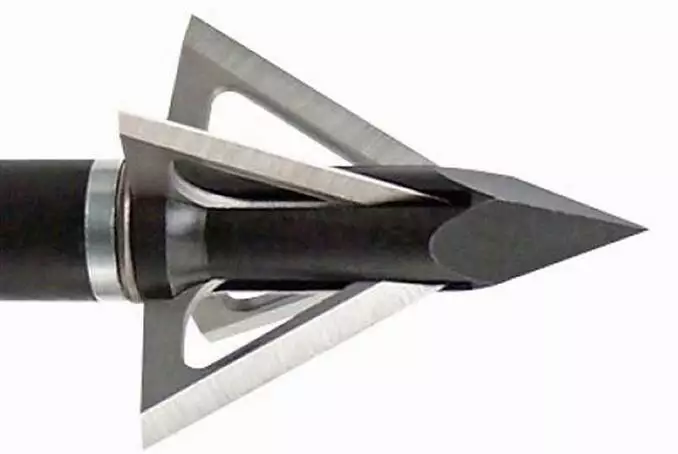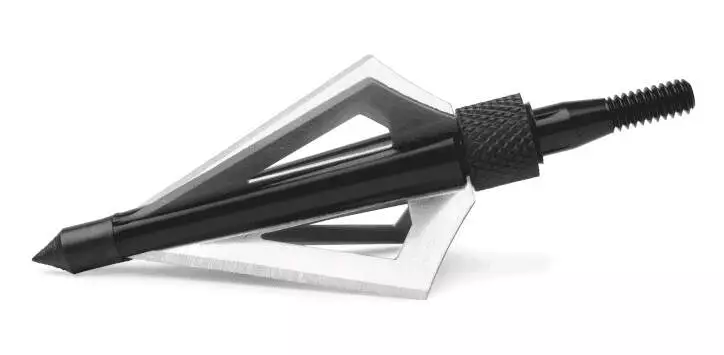Broadheads are a crucial component of any hunting kit; They are the tip of the arrow and they do all the damage to the animal. However, there is a problem, most people seem to not know what should be used to screw on broadheads! Screws provide a tight and strong fit that will not cause the head to spin or rotate.
If you need your broadhead screws to be stronger, use a screwdriver with a larger diameter shaft and a thicker blade.
Some screws on broadheads may have sickle barbs which can increase blood loss; the best screw on broadheads have spiral barbs, which do not cause any damage to the animal’s skin and make it easy for them to detach from the blade when they hit their target.
The best way to hit the target with an arrow is to make sure that you are using sharp broadheads. Broadheads that are not sharp enough can easily get caught up in the feathers of the game while the arrow is in flight and this will result in a badly aimed shot.
Making sure that all your broadheads are sharpened before shooting any game will ensure that you take clean shots and get better results.
What Should Be Used To Screw On Broadheads? (How To Screw Broadheads)
Tools You Need To Screw Broadheads
Special wrench: A special wrench is needed to screw on broadheads, as they are designed to be as secure as possible. The broadhead will not screw onto the arrow shaft without a wrench.
The wrench is used to tighten and loosen the broadheads in order to change their position on the shaft, they can be found in different shapes and sizes, and most are made out of metal.
It helps hunters save time when they need to screw on their broadheads, which would otherwise take them minutes or even hours.
Metal screw or rivet: Rivets, also known as screws or metal screws, are a common tool that is used to attach broadheads to the shafts of arrows.
Rivets require less effort and time than screws, but they don’t work with all broadheads. A metal screw is sufficient to hold the broadhead onto the arrow shaft. It can also be used as an alternative to a rivet, which is another type of fastener.
How To Screw On Broadheads
Hot Glue
The earliest recorded use of hot glue for this purpose dates back some decades ago. The process is simple and involves heating a small amount of glue, then pressing the heated glue on the stub of the arrow shaft.
The hot glue then cools and hardens. In recent years, this traditional method has been replaced by high-tech approaches such as adhesives and epoxies which are more reliable and easier to use.
Hunters prefer to use hot glue when attaching broadheads to their arrows so that they can replace them without having to worry about the heads loosening up during use.
Hot glue is applied around the base of the broadhead so that it has something more solid to hold onto, and it offers a quick and easy way for hunters to give their gear a tune-up when necessary.
The Pros Of Using Hot Glue
- Convenience: You won’t need any special tools or supplies because all you need is a container of hot glue and some toothpicks.
- Safety: Using it will keep your broadheads secure and unable to fall out if they are accidentally dropped or knocked over.
- Can be used anywhere: It can be used at home or while you’re hunting.
- It provides a strong, tight, and quick hold.
- Can be used for other purposes as well such as fixing electronics, making arts and crafts projects, etc.
- It is cheaper to use hot glue for broadhead screws because it is readily available in most hardware stores.
- It is easier to install the screw with hot glue because of its soft nature and ability to be molded into any shape.
- The glue can be used in areas where it would be difficult or impossible to use a screwdriver, such as underwater.
- Hot glue holds screws together more securely than other types of adhesive, which means that you don’t have to worry about the broadhead coming loose while you are hunting for game, or while you are using your crossbow during an archery hunt on a moving target.
- Hot glue on the broadhead screws will not damage your hands while shooting your bow or crossbow because it has little contact with them.
The Cons Of Using Hot Glue
- It can be difficult to install some broadheads as some require the use of a screwdriver only.
- Hot glue will not hold as well as screws.
- Hot glue will make it difficult to remove the broadhead from the shaft if you need to replace or repair it.
- Hot glue can make a mess and be a hassle to clean up.
- The hot glue might melt and ruin your broadhead if you use a high heat setting for too long during the installation process.
Cold Glue
Cold glue can be used to attach broadheads to the shafts of hunting arrows. It has many advantages over other types of glues and it can be applied in a variety of different ways.
The use of cold glue on broadheads is something that has been done by bowhunters for years; This is due to its ability to keep the broadhead securely in place with a solid attachment so it won’t become loose while you are hunting.
Cold glue is applied most often when there are pressures or loads on either side of the joint where it meets.
The joint between the broadhead and shaft are perfect examples of this type of joint under pressure, which is why many hunters will choose to use cold glue when attaching their broadheads in order to ensure maximum security and accuracy.
Cold glue is used in different ways; from securing the weight of the blade to the shaft, to securing the blades at their tips.
The glue is often applied by running a bead along the backside of the broadhead and then placing it onto the screw.
Cold glue also has some advantages over hot glue on your broadheads including better adhesion, not needing heat or clamping, long-lasting bonds that are watertight, no need for a primer on surfaces before applying the glue, and easy cleanup with acetone-based nail polish remover.
The Pros Of Cold Glue
- It is cheap; Unlike other materials, it only costs a few dollars to buy glue.
- It also does not take up much space, which means that you can pack more broadheads in your bag for hunting trips.
- Cold glue also provides extra stability because it has a higher coefficient of friction than the metal screw heads on broadheads do.
- Cold glue is also easily removable with just two drops of water so you can reuse your old broadhead if desired.
- Cold glue has less mess than other solvent-based adhesives and will not drip down the shaft and onto hands and clothes during the assembly of your equipment.
- Cold glue dries quickly and does not require heat so it may be applied in freezing conditions where other solvents would freeze on contact with metal or plastic parts before it can be applied properly.
- Does not contain toxic volatile organic compounds (VOCs) such as solvents, ammonia, formaldehyde, benzene, and so on.
The Cons Of Cold Glue
- Cold glue does not offer much mechanical strength; it will break apart if the screws are loosened for any reason.
- Cold glue is not suitable for high loads, so screws need to be very tight when using cold glue to keep broadheads together. The pressure of one’s hand will do the trick!
- Using cold glue to screw broadheads requires an even surface pattern since it needs something solid to stick against (i.e., you cannot use cold glue on a flat surface).
- The welded surface often leaves a whitish color that doesn’t look appealing.
- The glue can cause a bad smell that will stay for a long time.
- It is not suitable for all types of broadheads, particularly for thin blades.
- It can’t withstand high temperatures and the temperature difference in the welded area will make it loosen over time.
What’s The Best Way To Screw On Broadheads?
Generally speaking, the best way to screw a broadhead is to buy a mechanical broadhead and screw it on with a wrench, this is the best method because it’s fast and easy, and it’s much more accurate.
We can also say that it is dependent on your specific needs. For example, if you need a quick and easy way to change out broadheads, you might consider using glues that we previously talked about.
However, it’s important to consider the type of broadhead you’re using before choosing any method of screwing the broadhead.
Do You Use Needle Nose Pliers Or Locking Pliers To Screw On Broadheads?
Some hunters prefer needle-nose pliers to screw on broadheads because they are more precise which is helpful if you are looking for a tight fit.
Others prefer locking pliers because they offer more grip strength which is useful when you need to apply pressure to something that needs to be unscrewed.
Locking pliers have more features and uses than needle nose pliers, however, needle nose pliers are more convenient for attaching broadheads to a screw-on an arrow shaft.
Needle nose pliers are used to tighten screws, nuts, or bolts. Locking pliers are used for cutting through hard objects. We should use needle-nose pliers to tighten the broadheads.
Do I Need A Broadhead Wrench?
The answer is “no” because some screws are designed with an Allen key, which you can use to tighten them without any tools. You only need the wrench if you tighten your broadheads with it and you don’t have any other alternatives.
Recommended: Which Statement About Broadheads Is True?

Ever wondered how you can have a cruising boat without getting into financial problems? The answer is here. That is the reason why we set up this blog to share with you, safety tips, answers to questions that have to do with fishing and hunting. You are going to love it!
Hey! I am Armstrong!

